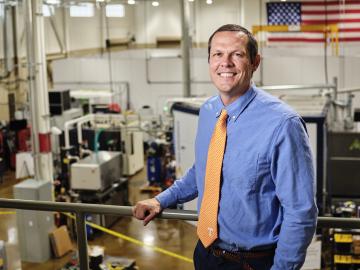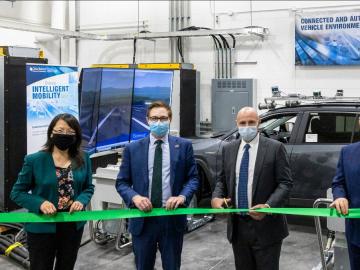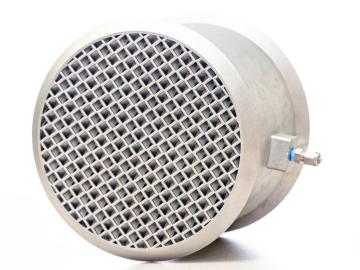
Filter News
Area of Research
- (-) Energy Science (73)
- (-) Fusion and Fission (12)
- (-) Supercomputing (74)
- Advanced Manufacturing (10)
- Biology and Environment (39)
- Computational Biology (1)
- Computational Engineering (1)
- Computer Science (2)
- Fusion Energy (1)
- Isotope Development and Production (1)
- Isotopes (23)
- Materials (78)
- Materials Characterization (1)
- Materials for Computing (11)
- Materials Under Extremes (1)
- National Security (26)
- Neutron Science (27)
- Nuclear Science and Technology (13)
- Quantum information Science (1)
News Type
News Topics
- (-) 3-D Printing/Advanced Manufacturing (53)
- (-) Advanced Reactors (7)
- (-) Big Data (18)
- (-) Composites (7)
- (-) Cybersecurity (14)
- (-) Exascale Computing (25)
- (-) High-Performance Computing (38)
- (-) Isotopes (2)
- (-) Materials Science (30)
- Artificial Intelligence (38)
- Bioenergy (27)
- Biology (17)
- Biomedical (16)
- Biotechnology (5)
- Buildings (20)
- Chemical Sciences (16)
- Clean Water (4)
- Computer Science (82)
- Coronavirus (20)
- Critical Materials (4)
- Education (1)
- Energy Storage (48)
- Environment (45)
- Fossil Energy (2)
- Frontier (30)
- Fusion (20)
- Grid (24)
- Hydropower (1)
- ITER (4)
- Machine Learning (16)
- Materials (31)
- Mathematics (3)
- Mercury (2)
- Microelectronics (1)
- Microscopy (13)
- Molten Salt (1)
- Nanotechnology (14)
- National Security (11)
- Neutron Science (19)
- Nuclear Energy (32)
- Partnerships (13)
- Physics (9)
- Polymers (6)
- Quantum Computing (16)
- Quantum Science (22)
- Security (10)
- Simulation (17)
- Software (1)
- Space Exploration (3)
- Summit (37)
- Transportation (39)
Media Contacts

Growing up in Florida, Emma Betters was fascinated by rockets and for good reason. Any time she wanted to see a space shuttle launch from NASA’s nearby Kennedy Space Center, all she had to do was sit on her front porch.

The Transformational Challenge Reactor, or TCR, a microreactor built using 3D printing and other new advanced technologies, could be operational by 2024.

Tony Schmitz, joint faculty researcher in machining and machine tools at Oak Ridge National Laboratory, and mechanical, aerospace and biomedical engineering professor at the University of Tennessee, Knoxville, has been elected to the College of Fellows of the American Society for Precision Engineering.

Soteria Battery Innovation Group has exclusively licensed and optioned a technology developed by Oak Ridge National Laboratory designed to eliminate thermal runaway in lithium ion batteries due to mechanical damage.

Four research teams from the Department of Energy’s Oak Ridge National Laboratory and their technologies have received 2020 R&D 100 Awards.

ORNL and Department of Energy officials dedicated the launch of two clean energy research initiatives that focus on the recycling and recovery of advanced manufacturing materials and on connected and

Oak Ridge National Laboratory researchers have designed and additively manufactured a first-of-its-kind aluminum device that enhances the capture of carbon dioxide emitted from fossil fuel plants and other industrial processes.

Oak Ridge National Laboratory researchers have developed artificial intelligence software for powder bed 3D printers that assesses the quality of parts in real time, without the need for expensive characterization equipment.

From materials science and earth system modeling to quantum information science and cybersecurity, experts in many fields run simulations and conduct experiments to collect the abundance of data necessary for scientific progress.

Five researchers at the Department of Energy’s Oak Ridge National Laboratory have been named ORNL Corporate Fellows in recognition of significant career accomplishments and continued leadership in their scientific fields.


